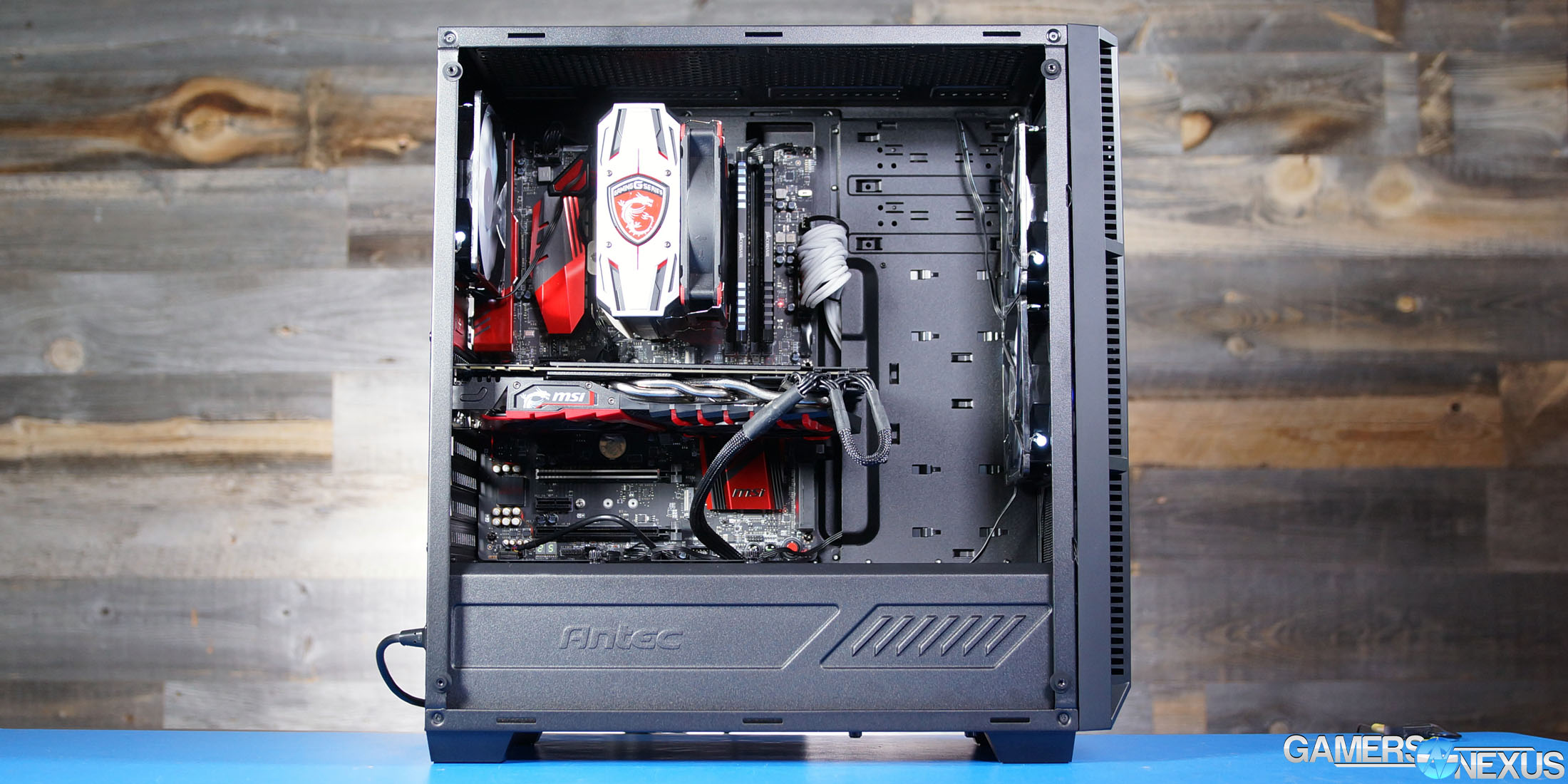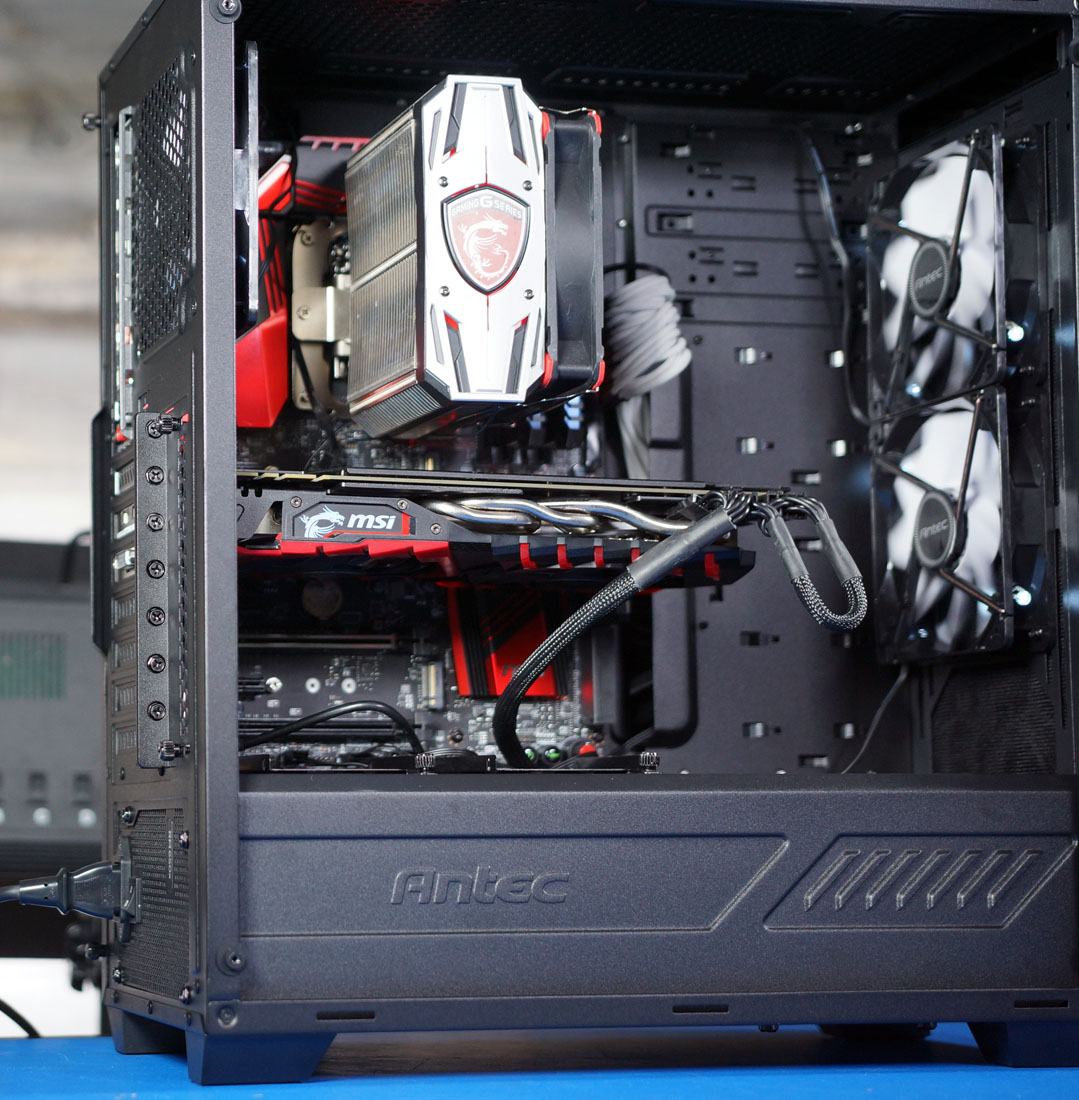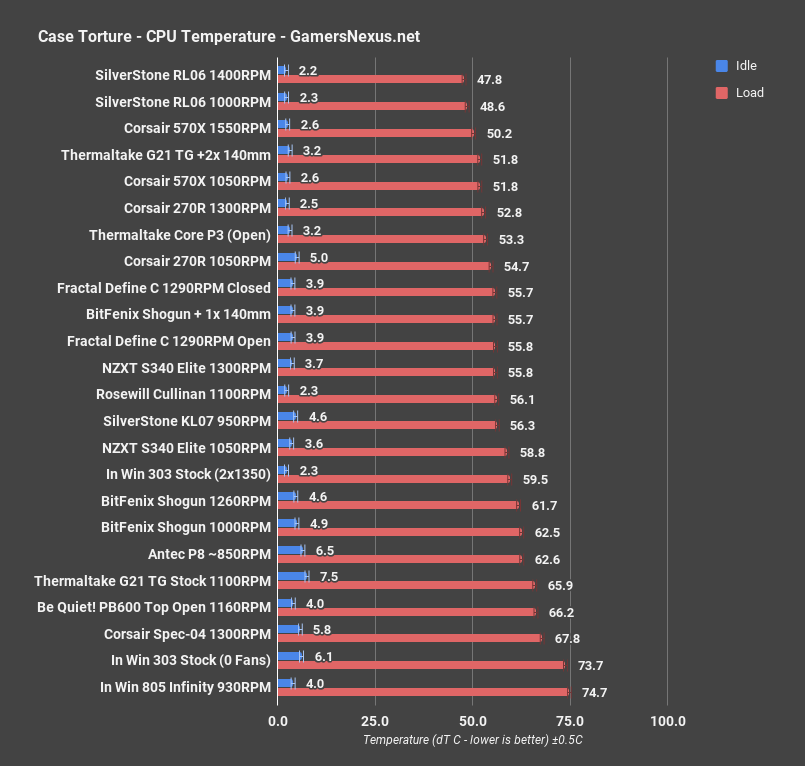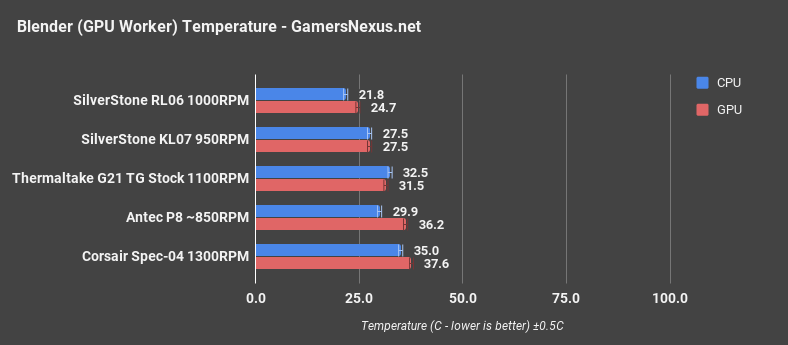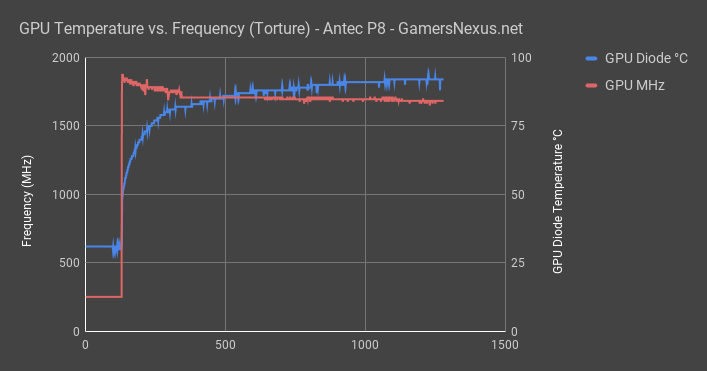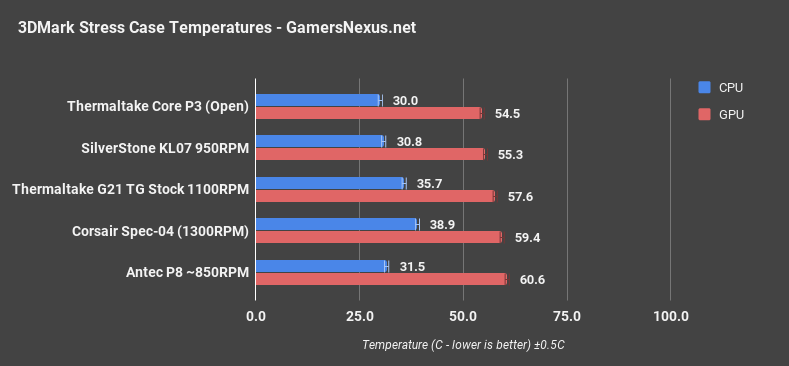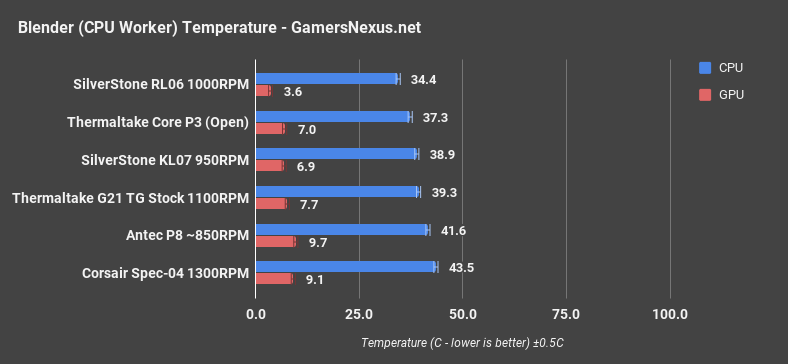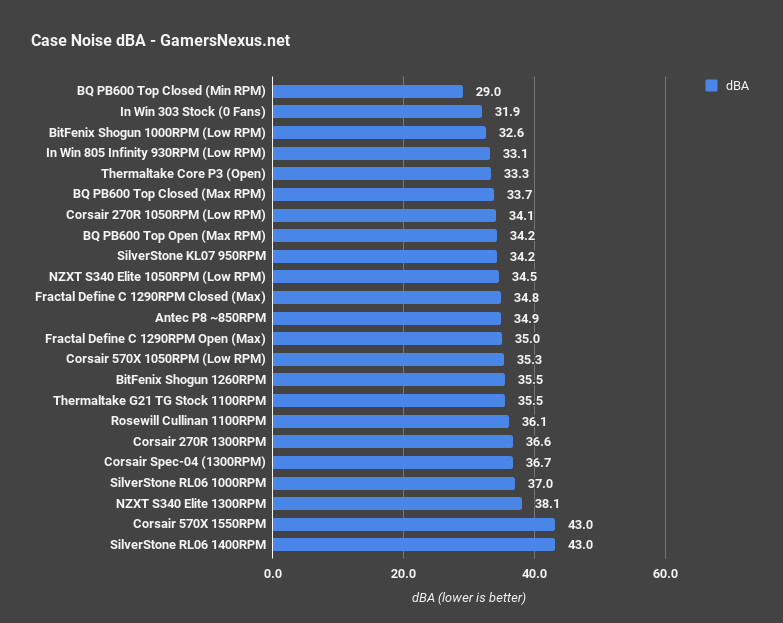Antec is a venerable company, founded in 1986, but they’ve been an infrequent guest to GamersNexus. We did a quick summary of the Performance One when it launched in 2012, were intrigued by the more recent Razer Cube, reviewed Antec’s 1250 highly, and reviewed the GX700. But that’s it--until now. Like many other manufacturers, Antec is now experimenting with sub-$100 tempered glass in their new P8 mid tower.
Appearance
The layout of the P8 is a familiar one: full PSU shroud, full coverage glass side panel, no 5.25” bays. Antec’s logo on the front panel lights up with white LEDs, matching the three white LED fans included with the case. Cases we’ve seen in the past with this style (S340 Elite, Thermaltake G21, Define C TG) tend to be symmetrical with flat, smooth surfaces and sharp edges, but the P8 has a less “blank” look with a pattern stamped into the PSU shroud, visible logo, and unique front panel. Right now, the case is only available in black.
Antec P8 Specs
Form Factor | Mid-tower |
Motherboard Support | ATX, micro-ATX, ITX |
Dimensions | 443 x 210 x 470 (H x W x D) |
Weight | 7.5 kg / 16.5 lbs |
I/O | 2 x USB 3.0 |
Expansion/Bays | 2 x 3.5” HDD trays (each compatible with 2.5” SSD) PCI x 7 Expansion slots |
Cooling | Fans: - 2 x Front 120mm (included) fan Radiators: |
MSRP | $90 |
The Build
Before building, the first step is tearing down. This mostly went smoothly, except that the front I/O is attached directly to the front panel. That made it difficult to remove the panel (for installing fans, etc.) without yanking cables, and most cases we’ve reviewed lately just screw the I/O to the chassis for this reason.
The PCIe screw cover is held on with captive screws and can be slid back and forth, making it easily adjustable. This same feature is applied to the hard drive cage, which can be slid forward to allow more room for PSU cables or back for better airflow. The shape of the PSU shroud made it difficult to use the full range of movement in our sample, but it’s a good idea: the cage can be repositioned without removing any screws or even opening the case.
Returning to the front panel, the lack of ventilation was concerning. The asymmetrical design has two narrow strips for intake (left and bottom) with a large mesh filter in front of the fans. At first glance, it seems like the front panel is a plastic frame surrounding a metal insert, which could be removed or replaced with mesh to allow airflow. In reality, it’s a solid plastic panel with a metal rectangle screwed to the front (with ten screws) for appearance and weight.
The logo is powered by a molex cable, which is a bit out of place in a case with no space for optical drives. For users that don’t want to dedicate a whole PSU cable to one LED, stashing the molex cable away and leaving the logo unlit looks perfectly fine.
Cable management space was limited but acceptable, thanks to the full PSU shroud. With the HDD cage pushed forwards, most cables can be bundled up next to the PSU. The best feature in this regard is the cutout along the edge of the motherboard where power and SATA cables are typically connected, which provides enough room for routing cables while obscuring them from view.
Case Test Methodology
We tested using our new Skylake case test bench, detailed in the table below. This particular configuration is brand new with the launch of the 570X & 270R. Results on this test platform cannot be compared to previous case benchmark results, as the platform has completely changed.
Conducting thermal tests requires careful measurement of temperatures in the surrounding environment. We control for ambient by constantly measuring temperatures with thermocouples and laser readers. We then produce charts using a Delta T(emperature) over Ambient value. This value subtracts the thermo-logged ambient value from the measured diode temperatures, producing a delta report of thermals. AIDA64 is used for logging thermals of silicon components, including the GPU diode.
All case fans are manually configured to their maximum throughput using BIOS, then we configure to an RPM closer to 1050 for a universal "quiet" testing. If a fan controller is present, we opt-in and test on multiple settings. This forces testing of case fan performance in addition to the case's air channeling and airstream design. This also ensures minimal variance when testing, as automatically controlled fan speeds can reduce reliability of benchmarking. The CPU fan is set to 1100RPM (constant) for consistency, and the CPU is overclocked to 4.4GHz with a vCore of 1.272V (constant). C-States and power saving states are disabled.
| Component | Courtesy Of | Price | |
| Video Card | MSI GTX 1080 Gaming X (OC Mode) | MSI | $640 |
| CPU | Intel i7-6700K @ 4.4GHz | GamersNexus | $300 |
| CPU Cooler | MSI Core Frozr L | MSI | TBD |
| Motherboard | MSI Z170A Gaming M7 | MSI | $180 |
| Memory | Corsair Vengeance LED 32GB 3200MHz | Corsair | $200 |
| SSD | Samsung 850 EVO 120GB | Samsung | N/A |
| PSU | Corsair RM650x | Corsair | $100 |
| Case | This is what we're testing! | - | - |
The video card is configured to run at 55% fan speed at all times.
Prior to load testing, we collect idle temperature results for ten minutes to determine the unloaded cooling performance of a case's fans and air channels. Thermal benchmarking is conducted for 1400 seconds (23 minutes), a period we've determined sufficient for achieving equilibrium. The over-time data is aggregated and will occasionally be compiled into charts, if interesting or relevant. The equilibrium performance is averaged to create the below charts.
Load testing is conducted using Prime95 LFFTs and Kombustor “FurMark” stress testing simultaneously. Testing is completely automated using in-house scripting, and executes with perfect accuracy on every run.
We recently validated our test methodology using a thermal chamber, finding our approach to be nearly perfectly accurate. Learn more here.
Thermals & Noise
As mentioned earlier, we were concerned about airflow in the P8, but unlike some previous reviews, there wasn’t an easy fix to test. The most basic improvement would be adding a fan, but this is a case that already includes three 120mm LED-lit fans. Replacing them would be a waste; they’re included in the case’s price. The stock fans are pleasantly quiet, but ours reported an underwhelming 800-ish RPM.
The problem isn’t with the front filter, which is lightweight and functional, but with the shallow depth of the front panel combined with a lack of intakes. The two vented strips visible from the exterior really are the only places for air to enter. We’ve seen the power of mesh front panels in this form factor with the RL06, still one of the best cooled cases we’ve ever reviewed, and the P8 could benefit from a less restrictive design.
The only easy improvement we could spot was moving one of the stock fans from the bottom-front slot inside the PSU shroud to the more exposed top-front slot. Keep in mind while reading these results that GPU temperatures would have been slightly better if we had left the fans in their stock configuration, but the CPU would have suffered for it. We’re confident that the configuration we tested made more sense for our test system, as we didn’t need any extra air directed into the PSU shroud.
Torture
Our heavy torture workload produced a dT of 62.5C above ambient for the CPU, just a bit cooler than the Thermaltake G21 TG, a case that shipped with only one fan and heavily restricted intake from stacked dust filters. That wasn’t quite enough to cause CPU throttling, but it came close.
The GPU fared even worse at 66.6C dT. That is technically the highest GPU delta on our chart so far, but as the temperature vs frequency chart shows, it was desperately throttling to keep temperatures down. We keep GPU fan speed fixed at 55% for all case tests (except Blender CPU), around the maximum speed that most cards’ default fan curves will reach. Comparing GPU deltas on our chart is therefore more difficult at the high end, when our MSI 1080 is forced to downclock, but it’s safe to say that a delta this high isn’t only bad news, it’s chewing away at framerate. This is why cooling matters. There is actual performance loss and FPS decay from these higher thermals. A more aggressive RPM and manual GPU fan curve could solve for some of this, but you end up with a vacuum in the case as a result.
3DMark
Our 3DMark stress testing is intended to show a more real-world GPU load. The CPU delta is predictably low here, but the 60.6C GPU delta is again the highest that we’ve seen for this test, although there are fewer results to compare against than in the torture test. The lack of space between the solid PSU shroud and the GPU starves it for air, especially with the lackluster case fans that stick around 800-900RPM.
60.6C GPU dT is 6.1C greater than our baseline, the Thermaltake Core P3, which is as open air as a case can be without being a test bench. As seen in the chart, there was more throttling, and that’s no good. 3DMark might not be a real game, but performance loss here is more likely to be reflected in the real world than in our torture test (which uses Furmark).
Blender
Even with the fans rearranged to supply extra air to the CPU cooler, rendering a Blender test file on the CPU caused a CPU dT of 41.6C. The Antec P8 with its three stock 120 fans places right between two cases with only one fan each, the warmer Corsair SPEC-04 and the cooler G21. Even GPU temperature is relatively warm, despite the lack of load.
Similar to the CPU render, rendering on the GPU placed GPU dT between the SPEC-04 and G21. However, both of those cases were significantly improved with additional fans, an advantage that the P8 doesn’t have.
Noise
The one advantage of the stock fans is that their low speed makes them whisper-quiet. 34.9 dBA is comparable to the Silverstone KL07 or the Fractal Define C, both of which use noise-dampening foam. In the stock configuration the sealed-off front panel will obstruct noise even if the fans are upgraded, but there’s nothing to prevent noise escaping from fans moved to the upper 240mm vent.
Conclusion
It’s the small details that reveal it as a budget case. For instance, Antec’s photos of the P8 all show a mismatched top PCIe slot cover, because all the other slot covers are the non-reusable kind that pop out. The standoffs that hold each corner of the glass panel in place are repurposed motherboard standoffs. The PSU’s dust filter is just a square of mesh. None of these are bad things, as long as they keep the price of the end product down.
We were initially told that the MSRP of the P8 would be $70, which was updated shortly before release to $85. At the time of writing, it’s listed at $90 both on Newegg and Antec’s own site. $70 would have made it a direct competitor to the Thermaltake Core G21, which also launched with a $70 MSRP and is available now for that price on Newegg. That would have been a tough competition--the G21 is a nice case, excepting problems with a superfluous dust filter, and it has two glass side panels to the P8’s one.
But the P8 is no longer competing with the G21. Instead, it’s competing with cases like the Fractal Define C TG and the In Win 303, both of which we reviewed highly, have a glass side panel, and are available right now for $90. Even the Corsair 400C and S340 Elite drop to $90 on sale. The P8’s price will squeeze it into a ton of “top ten tempered glass cases under $100” videos, but $90 is just too high for what it is: a budget case with a glass side panel. At this price, we can’t recommend it.
Editorial: Patrick Lathan
Host: Steve Burke
Video: Andrew Coleman
